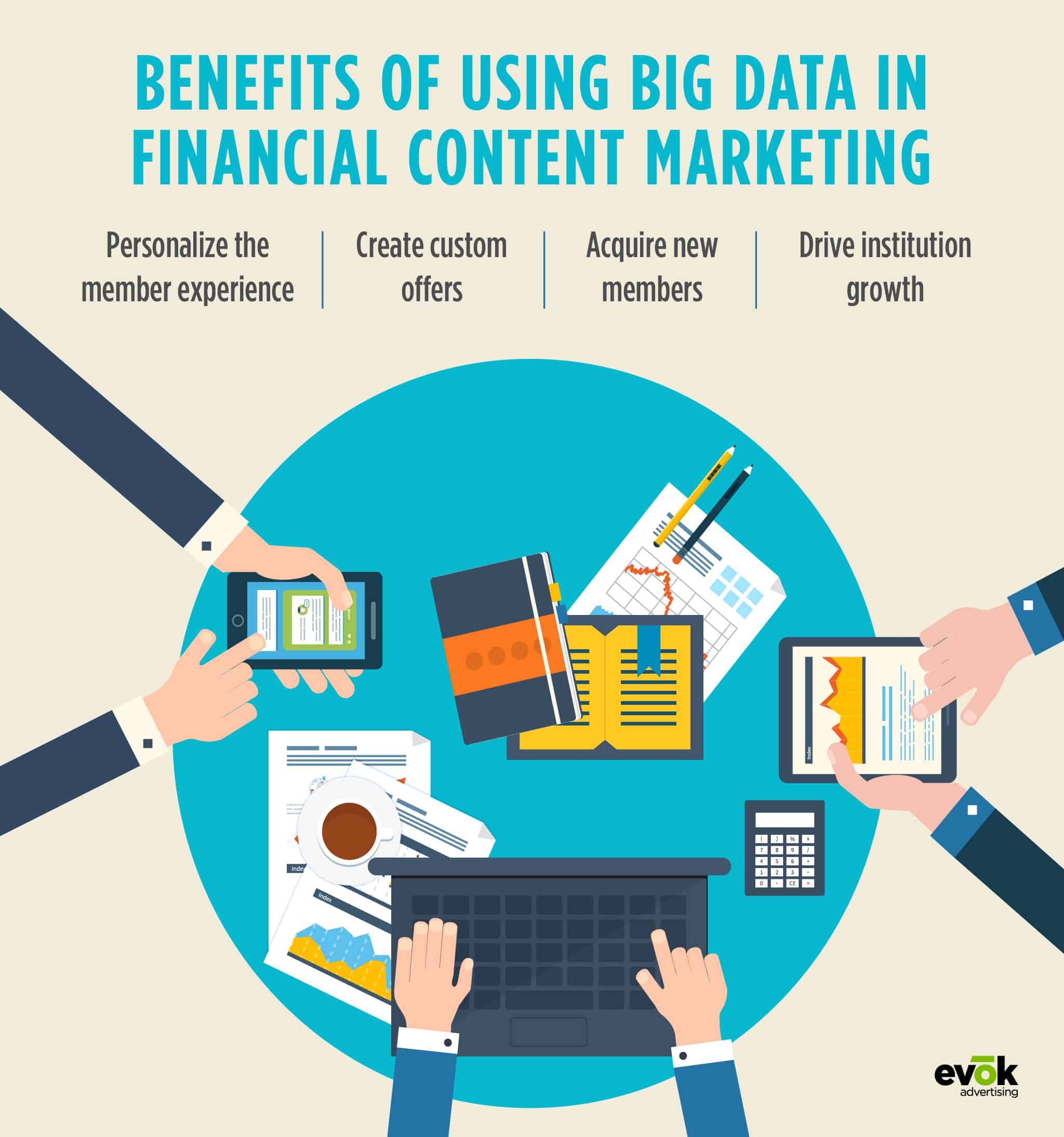
Practical Data-Driven Analytics to Enhance Your Content Marketing Strategies

Whether you’re a marketing veteran or a CEO with an eye on the future, you’ve likely heard the phrase, “Advertising is part art and part science.” As technology continues to overhaul the financial industry, that old adage has never been more relevant. The most eye-catching, creatively led, budget-stretching campaign can fall flat if it’s not backed by the proper research and data.
Data-driven marketing—fueled by advanced analytics and thorough insights—allows credit unions and other financial institutions to strengthen campaigns and content to align with what their members truly want and need. Data analysis can answer key questions posed in your institution’s growth plan, including what products and services your members want, the biggest areas for risk, and your most valuable avenues for new business. Here’s a look at how.
The Role of Big Data in Financial Marketing Strategies
First, let’s dig into how big data can be leveraged to enhance your institution’s marketing and maximize its efficiency. In other words, how data can be applied to help you exceed KPIs in areas that matter most.
“Because of AI, predictive modeling, and online banking, there is an abundance of information financial institutions can collect about a person and their buying habits. By utilizing software and data-driven analytics, you can have a 360-degree view of consumers and what financial products and services best align with a person’s needs in the different stages of their lifecycle.”
– Cheryl Parker, Director of Account Services at evok advertising
Personalize the customer/member experience
Banks, credit unions and other financial institutions collect massive amounts of customer data on a daily basis. From deposits and transfers to payments and debit card activity, financial marketers have the raw data needed to create robust customer profiles. This includes whether their members prefer to bank in person, online or on a mobile device, the times of day or week with the most activity, payment accounts linked to specific members, and more. Those profiles can be used to optimize marketing strategies by personalizing the member experience, as well as member communications.
Acquire new members and drive growth
Rule number one of business—know your customer. As a credit union or financial institution, having a clear picture of who you serve, both currently and potentially, is the foundation of any solid growth plan. The data at your fingertips can inform you on who your current members are and their banking preferences, and that information can be used to enhance member acquisition by creating audiences with similar preferences and at similar life stages.
How to Apply Data-Driven Analytics to Create Successful Content Marketing

Personalized offers
Customizing the customer experience goes further than tailoring your message for a specific audience. It means making your customers, both current and potential, data-driven personalized offers relevant to where they are on their financial journey. Not only will your content marketing feel and be more relevant to your audience, but the returns could be significant. Studies show content personalization has led to lifts in at least 5% of marketers’ most important metrics, not to mention a 20% increase in ROI for brands making data-driven personalization a focus in their marketing.
Create stronger, more relevant content
Beyond tracking the success of your content efforts, data can help guide financial marketers through the creative process itself. Data can help marketers identify target audiences and their trending topics and create content that is relevant and valuable to their members.
“Analytics can help financial institutions understand a consumer’s spending habits and where they are in their lifecycle so you can target them with relevant messaging and the right product mix, all while being respectful to where a person is in their financial freedom journey. It’s possible that a consumer wants to work on eliminating debt and saving money at the same time. By utilizing data, if they were in the market to purchase a car, you could target them with the benefits of a 36-month car loan so they save money and pay it off faster and also target them with having an emergency savings account or a rainy day fund if they don’t have one built up. If you aren’t already doing this as part of your overall marketing strategy, it is time to leverage the data and guide consumers to the right solution for them.”
– Cheryl Parker, Director of Account Services at evok advertising
Marketing has always been a soft science, blending data and information with the art of motivating human behavior. Whether you’re a big bank with lots of data to pull from or small credit union trying to organize the information you have, you can improve your content marketing game by determining what data would be relevant to your marketing goals and how you will keep monitor data over time to identify trends to keep your content fresh.